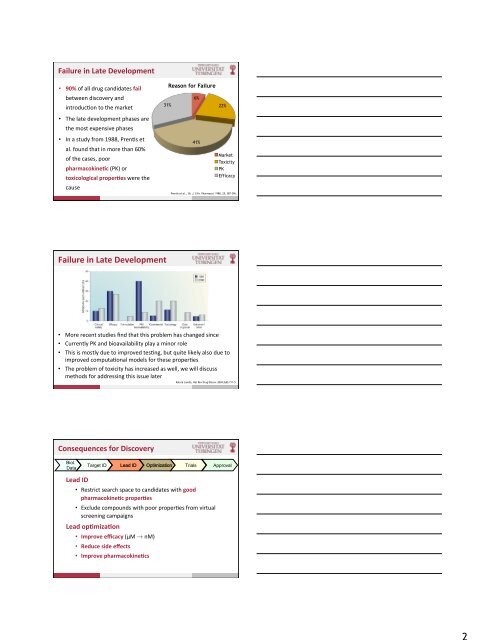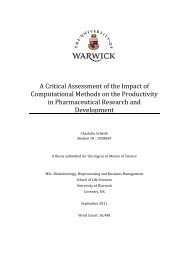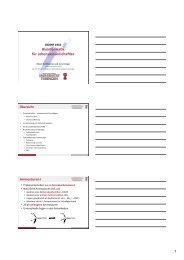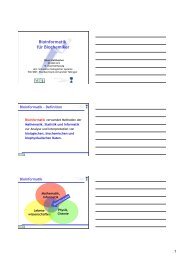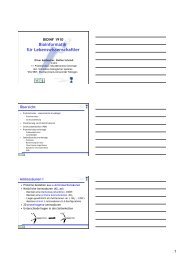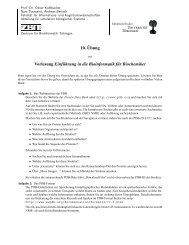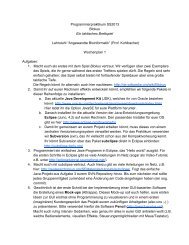Drug Design 2 - Applied Bioinformatics Group
Drug Design 2 - Applied Bioinformatics Group
Drug Design 2 - Applied Bioinformatics Group
Create successful ePaper yourself
Turn your PDF publications into a flip-book with our unique Google optimized e-Paper software.
Failure in Late Development<br />
• 90% of all drug candidates fail<br />
between discovery and<br />
introduc%on to the market<br />
• The late development phases are<br />
the most expensive phases<br />
• In a study from 1988, Pren%s et<br />
al. found that in more than 60%<br />
of the cases, poor<br />
pharmacokineDc (PK) or<br />
toxicological properDes were the<br />
cause<br />
Failure in Late Development<br />
31%<br />
Reason for Failure<br />
6%<br />
41%<br />
22%<br />
Market<br />
Toxicity<br />
PK<br />
Efficacy<br />
Prentis et al., Br. J. Clin. Pharmacol. 1988, 25, 387-396.<br />
• More recent studies find that this problem has changed since<br />
• Currently PK and bioavailability play a minor role<br />
• This is mostly due to improved tes%ng, but quite likely also due to<br />
improved computa%onal models for these proper%es<br />
• The problem of toxicity has increased as well, we will discuss<br />
methods for addressing this issue later<br />
Consequences for Discovery<br />
Biol.<br />
Data<br />
Lead ID<br />
• Restrict search space to candidates with good<br />
pharmacokineDc properDes<br />
Kola & Landis, Nat Rev <strong>Drug</strong> Discov. 2004;3(8):711-5.<br />
Target ID Lead ID Optimization Trials Approval<br />
• Exclude compounds with poor proper%es from virtual<br />
screening campaigns<br />
Lead opDmizaDon<br />
• Improve efficacy (µM ! nM)<br />
• Reduce side effects<br />
• Improve pharmacokineDcs


